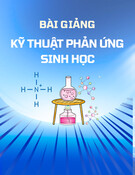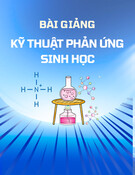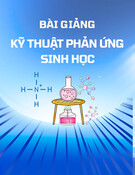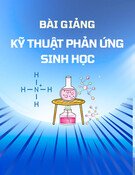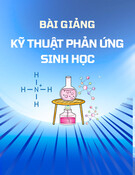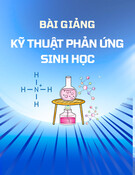
HPU2. Nat. Sci. Tech. Vol 02, issue 01 (2023), 64-69
HPU2 Journal of Sciences:
Natural Sciences and Technology
journal homepage: https://sj.hpu2.edu.vn
Article type: Research article
Received date: 26-4-2023 ; Revised date: 28-4-2023 ; Accepted date: 28-4-2023
This is licensed under the CC BY-NC-ND 4.0
Synthesis of new triazole-fused bicyclic heterocycles
involving benzofuran from 4-amino-1,2,4-triazole-3-thiol
Thanh-Tu Bui
a
, Hoang-Uy Tan
a
, Hoang-Danh Nguyen
a
, Tan-Tai Nguyen
a,*
a
Faculty of Chemistry, University of Science, Vietnam National University Ho Chi Minh City, Vietnam
Abstract
In the further research and synthesis of hybrid molecules which exhibit highly biological activities, the
synthesis of triazole-fused bicyclic heterocycles bearing the benzofuran has been undertaken. A facile,
convenient and good yielding synthesis of novel benzofuran-bearing 1,2,4-trazole derivatives were
described. Herein, two derivatives of [1,2,4]triazolo[3,4-b][1,3,4]thiadiazole were synthesized from
salicylaldehyde in four steps in moderate to good yields. Structures of all the targeted synthesized
compounds were elucidated by spectral methods of analysis.
Keywords: Benzofuran, 1,2,4-triazole, 4-amino-1,2,4-triazole-3-thiol, [1,2,4]triazolo[3,4-
b][1,3,4]thiadiazole, triazole-fused bicyclic, heterocycles
1. Introduction
1,2,4-Triazole derivatives have attracted researchers because of their important chemical and
biological properties. They possess a number of significant biological activities involving
antibacterial, antifungal, anti-inflammatory, anticonvulsant, antioxidant, anticancer
1, 2
… Among them,
4-amino-1,2,4-triazole-3-thiol derivatives are of particular interest to scientists because of their
significant increase in biological activity due to amino and thiol groups.
3
The derivatives
[1,2,4]triazolo[3,4-b][1,3,4]thiadiazole (Figure 1) were synthesized from 4-amino-1,2,4-triazole-3-
thiol compounds and have important biological activities such as antibacterial,
4
antifungal,
4
anticancer
5, 6
and treatment of Alzheimer's disease
7
.
* Corresponding author, E-mail: nttai@hcmus.edu.vn
https://doi.org/10.56764/hpu2.jos.2023.1.2.64-69

HPU2. Nat. Sci. Tech. 2023, 2(1), 64-69
https://sj.hpu2.edu.vn 65
Figure 1. Structure of [1,2,4]triazolo[3,4-b][1,3,4]thiadiazole derivatives
Benzofuran is also widely investigated because of their biological activities including antifungal,
antibacterial, antiviral, anti-HIV and anticancer.8-10 Thus, the combination of these components to
form hybrid molecules may exhibit strongly biological potential.11 They have become a motif for the
development of new drugs.
2. Materials and methods
2.1. General
All chemicals were purchased from Merck (for synthetic class) and Sigma Aldrich while organic
solvents were purchased from the commercial source and were used without any further purification.
The NMR spectra were acquired using the Bruker Avance III spectrometer (500 MHz for 1H and 125
MHz for 13C). Chemical shifts are expressed in parts per million (ppm) and reported relative to the
residual solvent signal as an internal reference. High resolution mass spectra (HRMS) were recorded
using a HRMS X500R QTOF mass spectrometer in electrospray ionization (ESI) mode. The melting
points were determined using a Gallenkamp digital Melting point apparatus 5A-6797 with a rate of
heating of 2°C/min. Reactions were monitored using thin layer chromatography (TLC) on silica gel
plates (silica gel 60 F254, Merck), visualized under ultraviolet light (254 nm). Column chromatography
was performed on silica gel Merck 60 (230–400 mesh) purchased from HiMedia Laboratories Pvt.
Ltd. (India).
2.2. Synthesis of ethyl benzofuran-2-carboxylate (1)
A solution of salicylaldehyde (12.2 g, 100 mmol) and K2CO3 (41.10 g, 300 mol) in DMF (80 mL)
was stirred at room temperature for 30 minutes. Then, ethyl chloroacetate (12.25 g, 100 mol) was
slowly dropped into that solution while the mixture was stirred during two hours at 8090 °C. The
color of solution was changed from yellow to green, dark green, brown and finally black.
Consequently, that solution was poured into crushed ice and was extracted with ethyl acetate (100 mL
3). Then, the combined organic phases were dried over anhydrous Na2SO4 and evaporated under
reduced pressure to afford ethyl benzofuran-2-carboxylate (1) (15.80 g, 83%).
Dark yellow liquid; 1H–NMR (500 MHz, DMSO-d6)
H (ppm): 7.75 (dd, J = 8.0 Hz, 1.1, 1H),
7.67 (dd, J = 8.4, 1.0 Hz, 1H), 7.65 (s, 1H), 7.47 (ddd, J = 8.4, 7.2, 1.2 Hz, 1H), 7.31(ddd, J = 7.9,
7.2, 1.2 Hz, 1H), 4.32 (q, J = 7.1 Hz, 2H), 1.30 (t, J = 7.1 Hz, 3H); 13C–NMR (125 MHz, DMSO-d6)
C (ppm): 158.6, 155.0, 145.1, 127.7, 126.6, 123.8, 123.0, 113.8, 112.0, 61.0, 13.9. These data are
consistent with that reported in the literature.12
2.3. Synthesis of benzofuran-2-carbohydrazide (2)
A solution of ethyl benzofuran-2-carboxylate (1) (11.40 g, 60 mol) in absolute ethanol (30 mL)
was slowly continuously added by hydrazine hydrate 50% (18.00 g, 180 mol) under reflux for four
hours. Upon completion, the reaction mixture was kept at 24 °C overnight to solidify the product.
Consequently, the separated solid was filtered, washed with cold ethanol and then recrystallized in
absolute ethanol to give benzofuran-2-carbohydrazide (2) (7.91 g, 75%).

HPU2. Nat. Sci. Tech. 2023, 2(1), 64-69
https://sj.hpu2.edu.vn 66
White crystals, melting point 190194 °C (lit. 12 190194 °C); 1H–NMR (500 MHz, DMSO-d6)
H (ppm): 10.01 (s, 1H), 7.75 (dd, J = 8.0, 0.8 Hz, 1H), 7.63 (dd, J = 8.4, 0.9 Hz, 1H), 7.51 (s, 1H),
7.44 (ddd, J = 8.4, 7.2, 0.8 Hz, 1H), 7.32 (ddd, J = 8.0, 7.2, 0.9 Hz, 1H), 4.58 (br, 2H); 13C–NMR
(125 MHz, DMSO-d6)
C (ppm): 157.8, 154.2, 148.4, 127.0, 126.6, 123.6, 122.6, 111.7, 108.7. These
data are consistent with that reported in the literature.12
2.4. Synthesis of 4-amino-5-(benzofuran-2-yl)-4H-1,2,4-triazole-3-thiol (3)
In a 500 mL flask, dissolve the benzofuran-3-carbohydrazide (2) (7.40 g, 40 mmol) and KOH
(2.24 g, 40 mmol) in absolute ethanol (100 mL). Slowly add CS2 (3.04 g, 40 mmol) to the mixture, stir
for 30 min at room temperature. The yellow precipitate is filtered and washed with Et2O (20 mL 3).
The combined organic layer was dried over anhydrous Na2SO4 and evaporated under reduced pressure
to obtain the solid product. Dissolve the solid obtained in water (30 mL). The hydrazine hydrate (2.0
mL, 40 mmol) was added into the mixture and heat under reflux for four hours. The reaction mixture
was cooled to room temperature and was then acidified using a solution of HCl 1M to pH67 to form
a precipitate. The precipitate is filtered and recrystallized in DMF: H2O (v/v 1: 1) to obtain 4-amino-5-
(benzofuran-2-yl)-4H-1,2,4 -triazole-3-thiol (3) (6.78 g, 73%).
White crystals; 1H–NMR (500 MHz, DMSO-d6) H (ppm): 14.14 (s, 1H), 7.90 (s, 1H), 7.83 (dd, J
= 7.9, 1.1 Hz, 1H), 7.71 (d, J = 8.3 Hz, 1H), 7.46 (ddd, J = 8.4, 7.2, 1.3 Hz, 1H), 7.35 (dd, J = 7.9, 7.3
Hz, 1H), 5.96 (s, 2H); 13C–NMR (125 MHz, DMSO-d6)
C (ppm): 167.1, 154.0, 142.6, 141.4, 127.1,
126.6, 123.8, 122.5, 111.5, 109.9.
2.5. General procedure for the synthesis of 1,2,4-triazolo-[3,4-b]-1,3,4-thiadiazole (4)
A mixture of 4-amino-5-(benzofuran-2-yl)-4H-1,2,4-triazole-3-thiol (3) (232 mg, 1.0 mmol) and
aromatic carboxylic acid (1.2 mmol) in phosphorus oxychloride (10 mL) was heated under reflux for
five hours, then cooled to room temperature and poured into cold water. Excess POCl3 was neutralized
with potassium carbonate solution. The precipitate formed was filtered, dried and recrystallized from
DMF to give compounds 4a-b.
3-(Benzofuran-2-yl)-6-phényl-1,2,4-triazolo-[3,4-b]-1,3,4-thiadiazole (4a): 191 mg, yield: 60%,
yellow solid; 1H–NMR (500 MHz, DMSO-d6) δH (ppm): 8.14 (dd, 7.2, 1.5 Hz, 2H), 7.93 (s, 1H), 7.87
(d, 7.7 Hz, 1H), 7.80 (d, 8.3 Hz, 1H), 7.73 (m, 1H), 7.68 (dd, 7.7, 7.1 Hz, 2H), 7.49 (ddd, 8.3, 7.2, 1.2
Hz, 1H), 7.39 (dd, 7.8, 7.2 Hz, 1H).; 13C–NMR (125 MHz, DMSO-d6)
C (ppm): 167.8, 154.5, 154.4,
141.8, 139.2, 133.2, 129.8, 128.9, 127.5, 127.5, 126.5, 124.0, 122.3, 111.7, 107.8.
3-(Benzofuran-2-yl)-[6-(2-hydroxyphényl)]-1,2,4-triazolo-[3,4-b]-1,3,4-thiadiazole (4b): 184 mg,
yield: 55%, dark yellow solid; 1H–NMR (500 MHz, DMSO-d6) δH (ppm): 10.41 (s, 1H), 7.95 – 7.88
(m, 2H), 7.85 (d, J = 7.6 Hz, 1H), 7.81 (d, J = 8.2 Hz, 1H), 7.56 – 7.49 (m, 2H), 7.41 (t, J = 7.6 Hz,
1H), 7.13 (d, J = 8.4 Hz, 1H), 7.06 (t, J = 7.6 Hz, 1H); 13C–NMR (125 MHz, DMSO-d6)
C (ppm):
163.4, 156.7, 156.5, 155.1, 140.2, 133.8, 129.2, 127.3, 127.1, 124.3, 122.7, 119.8, 117.2, 111.9, 110.6,
109.4. HR-MS (ESI): calcd. For C17H10N4O2S ([M-H]-) 333.0446, found: 333.0447.
3. Results and discussion
The 1,2,4-triazolo[3,4-b][1,3,4]thiadiazole derivatives (4a, 4b) were synthesized according to
Scheme 1. Ethyl benzofuran-2-carboxylate (1) is prepared from salicylaldehyde, potassium carbonate,
and ethyl chloroacetate in the solvent dimethylformamide. This mixture is heated at 80-90 °C for 6
hours. The product (1) obtained with 83% yield. Then, (1) is converted to benzofuran-2-
carbohydrazide (2) by the reaction with hydrazine hydrate with the yield of 75%. Hydrazide (2) reacts

HPU2. Nat. Sci. Tech. 2023, 2(1), 64-69
https://sj.hpu2.edu.vn 67
with carbon disulfide (CS2) and hydrazine hydrate successively to form 4-amino-5-(benzofuran-2-yl)-
1,2,4-triazole-3-thiol (3) with 73% yield.
The important step of this synthetic pathway is cyclization between 4-amino-5-(benzofuran-2-yl)-
4H-1,2,4-triazole-3-thiol (3) and carboxylic acid. We obtained two 1,2,4-triazolo[3,4-
b][1,3,4]thiadiazole derivatives 4a-b with the yields ranging from 55 to 60%. The chemical structures
of these products were elucidated using the 1H and 13C NMR spectra. The disappearance of mobile
protons NH2 (about 6 ppm) and SH (about 14 ppm) in the 1H–NMR spectrum of each derivative
allowed us to confirm the successful cyclization. Furthermore, in the 13C-NMR spectra, the presence
of carbon N=C-S at about 163-168 ppm were further supportive of this structure.
CHO
OH
ClCH2COOEt
DMF/K2CO3, 80-90oC
Salicylaldehyde
O
OEt
O
Benzofurane-2-carboxylate d'éthyle
1 (83%)
H2N-NH2.H2O
EtOH, reflux
O
HN-NH2
O
Benzofurane-2-
carbohydrazide
2 (75%)
1. CS2, KOH, EtOH
2. H2N-NH2.H2O,
EtOH, AcOH
4-amino-5-(benzofuran-2-yl)-
1,2,4-triazole-3-thiol
3 (73%)
O N
N
N
NS
R
4a (60%) : R = C6H5-
4b (55%) : R =2-OH-C6H4-
RCOOH, POCl3
4a-b
O N
N
N
SH
H2N
Scheme 1. The synthetic route for the preparation of 1,2,4-triazolo[3,4-b][1,3,4]thiadiazole derivatives
A possible reaction mechanism for the formation of 1,2,4-triazolo[3,4-b][1,3,4]thiadiazole
derivatives has been proposed as shown in Scheme 2. First, carboxylic acid reacts with POCl3 to form
acid chloride. Then, the amino group attacks the carbonyl group, followed by the leaving of a chloride
to afford an amide. The cyclization reaction occurs between the thiol group and carbonyl group,
followed by dehydration to form 1,3,4-thiadiazole derivatives.

HPU2. Nat. Sci. Tech. 2023, 2(1), 64-69
https://sj.hpu2.edu.vn 68
Scheme 2. Proposed reaction mechanism of the formation of 3-(benzofuran-2-yl)-
6-aryl-1,2,4-triazolo[3,4-b][1,3,4]thiadiazole derivatives.
The electronic properties of the substituents on the aromatic ring of carboxylic acids play a role in
their reaction performance. In the presence of an electron donating substituent (–OH), its resonance
donating to the aromatic ring reduces the activity of the carbonyl group. This reason leads to the
formation of products 4b with a slightly lower yield (55%) than that of product 4a (60%) in the case of
a non-substituent (R=H).
4. Conclusions
Using a convenient and simple method, starting from salicylaldehyde, we have synthesized two
1,2,4-triazolo[3,4-b][1,3,4]thiadiazole derivatives in four steps. First, the salicylaldehyde was
transformed to ethyl benzofuran-2-carboxylate (1), which was subsequently treated with hydrazine
hydrate to afford benzofuran-2-carbohydrazide (2), with the yields of 77% and 80%, respectively. The
treatments of benzofuran-2-carbohydrazide with carbon disulfide and potassium hydroxide in ethanol
affords an ntermediate product which reacts later with hydrazine hydrate to obtain the 4-amino-5-
(benzofuran-2-yl)-4H-1,2,4-triazole-3-thiol (3) with 73% yield. The key cyclization step between the
4-amino-1,2,4-triazole-3-thiol (3) with carboxylic acids was carried out to form the 1,2,4-triazolo[3,4-
b][1,3,4]thiadiazole derivatives 4a and 4b with the yields of 60% and 55%, respectively. The obtained
results can be explained by the effect of the substituent on the aromatic ring of carboxylic acid. The
electron donating substituent (–OH) due to its resonance donating to the aromatic ring could reduce
the activity of carbonyl group, leads to the cyclization with a slightly lower yield. Their chemical
structures were elucidated through NMR and HR–MS spectral analysis. All 1,2,4-triazolo[3,4-
b][1,3,4]thiadiazole derivatives are new compounds, reported for the first time. Due to the ability to
combine with other frameworks, the synthesis of 1,2,4-triazine derivatives is still very promising and
developing widely.


![Tổng hợp cấu trúc lai giáp cạnh 5H-thiazolo[2′,3′:2,3]imidazo[4,5-b]indole bằng phản ứng ghép cặp C-N liên tiếp xúc tác đồng](https://cdn.tailieu.vn/images/document/thumbnail/2025/20250330/vimitsuki/135x160/2451743340007.jpg)


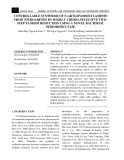
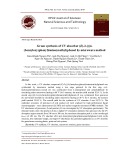
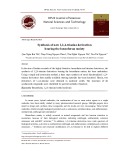
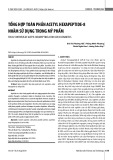

![Nghiên cứu tổng hợp dẫn xuất thế thieno[3,2-b]thiophen bằng phản ứng xúc tác palađi](https://cdn.tailieu.vn/images/document/thumbnail/2024/20240929/xuanphongdacy09/135x160/8461727545047.jpg)



![Bài tập Đa dạng thế giới sống [kèm đáp án/ hướng dẫn giải]](https://cdn.tailieu.vn/images/document/thumbnail/2025/20251123/thaohoang9203@gmail.com/135x160/5861763951302.jpg)
